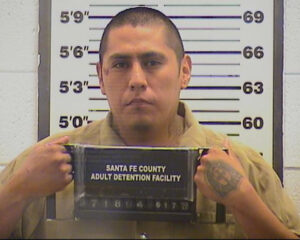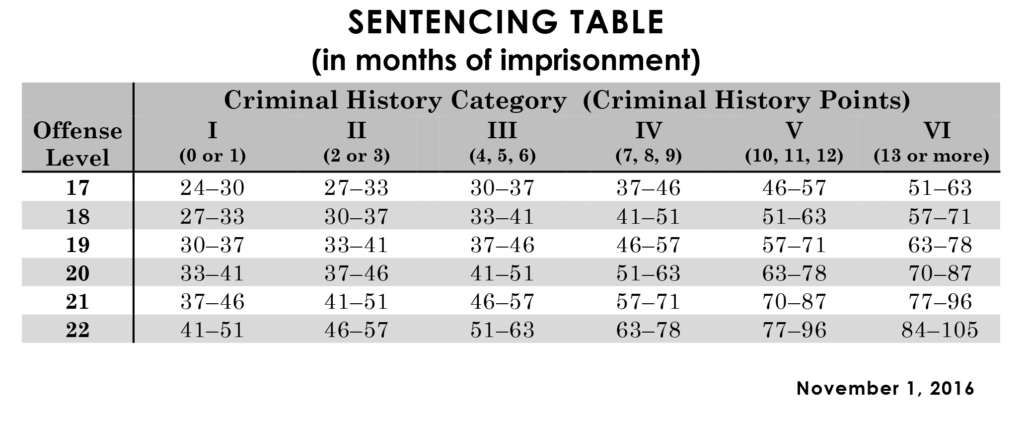- Suspect: Jerome Dayzie
- Victim: Marvin Johnson, 37
- Charges: Involuntary manslaughter
- Status: Plea to involuntary manslaughter; sentenced to just over 3 years
- Sentence: 37 months (3+ years) followed by 3 years of supervised release
- Date of incident: Dec. 9, 2017
- Agency: FBI
- Location: BIA/Indian Services/Navajo Route 13, 1 mile west of U.S. Highway 491, near Shiprock and Mitten Rock, San Juan County
- Federal magistrate case number: 17-mj-03350
- Federal district case number: 18-cr-01171
- Prosecutor: Raquel Ruiz-Velez
- Type of incident: DWI
Summary
On Dec. 9, 2017, Jerome Dayzie was driving back from Colorado to his home in Round Rock, Ariz, with his wife, identified as Terra Dayzie, and a friend, Marvin Johnson, 37. Jerome Dayzie, who had a blood-alcohol content of 0.196, crashed into the back of a parked trailer on the side of the road. Johnson was ejected and died at the scene, according to court records.
Jerome Dayzie was initially arrested and charged with involuntary manslaughter, according to court records.
On April 16, 2018, he pleaded guilty to the same charge and on Feb. 26, 2019, District Judge Martha Vazquez sentenced him to the minimum under the sentencing guidelines, just over three years, despite four previous convictions for DUI, according to court records.
The incident
On Dec. 9, 2017, Jerome Dayzie was driving on BIA/Indian Services/Navajo Route 13, toward his home in Round Rock, Ariz, with his wife and the victim, Marvin Johnson, 37, FBI Agent Kalon Fancher wrote in an affidavit for an arrest warrant.

They had driven to Cortez, Colo., to buy beer at the G-Whil liquor store. There, they bought three cases of St. Ides malt liquor, all in 40-ounce bottles. St. Ides has an ABV, or alcohol by volume, of 8.2 percent. They were sharing the liquor as they drove back to Arizona and Jerome Dayzie estimated he drank a whole bottle by himself, he told Fancher in an interrogation, according to Fancher’s affidavit.
Jerome Dayzie said Johnson was the one who wanted to go, Fancher wrote.
After he turned off Highway 491 and onto BIA/Indian Services/Navajo Route 13, the sun was in his face and a car was heading toward him. A trailer was parked “half on the road,” Fancher wrote, summarizing his interview with Jerome Dayzie.
“He stated ‘it’s either I hit the other vehicle or I hit the trailer,'” Fancher wrote. “He stated he hit the end of the trailer and flipped right over.”
According to a sentencing memorandum, his blood-alcohol content was 0.196.
Johnson was in the back seat of Jerome Dayzie’s Ford Explorer when he was ejected from the vehicle.
Jerome Dayzie’s wife, Terra Dayzie (identified as T.D. or Jane Doe-1 in some court records), said Jerome Dayzie drank about half of a 40-ounce bottle, Fancher wrote.
Fancher wrote:
“JANE DOE-1 stated she fell asleep and woke up when DAYZIE hit the back of a trailer parked along the side of the road. JANE DOE-1 stated (V-1) flipped over. She stated JOHN DOE-1 was thrown out of (V-1) and she tried to wake him up but he was not responding.”
When law enforcement arrived, they declared him dead at the scene, he wrote.
In a sentencing memorandum, prosecutor Raquel Ruiz-Velez wrote that the flatbed trailer Jerome Dayzie hit was loaded with furniture.
After crashing into the rear, Jerome Dayzie’s Ford Explorer flipped. Johnson was ejected and pinned under the driver’s side, Ruiz-Velez wrote.
One witness, behind Jerome Dayzie, said his car had been swerving from side to side before it hit the trailer, rolled, and landed on the driver’s side, she wrote.
The owner of the trailer said he and his son were driving to Arizona when they noticed the straps holding the furniture down seemed to be loose. They pulled to the side of the road to check the straps before Jerome Dayzie crashed into the back of the trailer, Ruiz-Velez wrote.
In an amended sentencing memorandum, Jerome Dayzie’s attorney, federal public defender John Butcher, wrote that the trio were “bootlegging” alcohol to the reservation.
According to a deputy field investigation by Tiffany Keaton, with the Office of the Medical Investigator, witnesses told law enforcement that the Explorer “clipped” the left corner of the trailer, causing the trailer to “fork” to the left. The explorer then flipped one and a half times. Johnson was ejected out the passenger-side window before it landed on him. He was not wearing a seat belt.
“Witnesses, were able to pull the vehicle off of Marvin Johnson,” Keaton wrote.
According to the autopsy report, Johnson died from blunt chest trauma.
Fancher filed the for the arrest warrant two days after the crash, on Dec. 11., 2017.
Court proceedings
Pre-trial release
Jerome Dayzie pleaded not guilty, waived a preliminary hearing and a grand jury presentment on Dec. 15, 2017, and federal Magistrate Judge Steven Yarbrough released him to the La Pasada Halfway House in Albuquerque, according to the docket and a response by Ruiz-Velez to a motion to allow Jerome Dayzie to speak to his wife, Terra Dayzie.
Among the conditions of release, Jerome Dayzie was prohibited from speaking to any of the witnesses, his wife included.
Ruiz-Velez wrote that she opposed letting Jerome Dayzie talk to his wife “to assure the integrity of the judicial proceedings against the Defendant.”
In a reply to Ruiz-Velez’s response, Butcher wrote his client had a legitimate need to talk to his wife.
“As mentioned in his Motion, they have four children and a home together,” Butcher wrote. “Thus, there is a need to coordinate the care of the children as well as the household finances.”
According to Fancher’s affidavit, Terra Dayzie told investigators that she fell asleep during the drive and only woke up as the crash was happening.
Yarbrough granted the motion over Ruiz-Velez’s objections.
Plea
On April 16, 2018, after repeatedly waiving his right to a grand jury presentment, Jerome Dayzie pleaded guilty to a criminal information charging him with involuntary manslaughter in front of Magistrate Judge Laura Fashing, who accepted the plea.
According to the plea deal, Jerome Dayzie admitted to killing Johnson while driving drunk.
The plea agreement contained agreement as to the sentence, other than that he was entitled to a reduction of two levels in the federal sentencing guidelines because he pleaded guilty.
Sentencing arguments
Ruiz-Velez wrote in a sentencing memorandum, dated Feb. 7, 2019, that Jerome Dayzie should be sentenced to the high end of the guidelines for his crime, 46 months, or just under four years.
She wrote that he had an offense level of 19 and a criminal history category of III, resulting in a guideline sentence range of 37 months (just over 3 years) to 46 months.

She wrote that his blood-alcohol content was extremely high, at 0.196, over double the legal per se limit of 0.08.
His criminal history included five prior arrests for DUI, four of which resulted in convictions, although only two of those were considered to calculate his criminal history category.
“It is troubling that Defendant was sentenced for these two convictions on June 21, 2016 and January 12, 2017, less than two years before the instant offense,” Ruiz-Velez wrote. “Defendant’s convictions show that he was aware of the illegality of his conduct when he decided to drive his vehicle while under the influence of alcohol on December 9, 2017.”
His “past conduct” endangered the lives of others, including his 15-year-old son, she wrote.
Butcher wrote in his own initial sentencing memorandum that Johnson was not a stranger to his killer.
“He was a friend and family member,” Butcher wrote. “The three were drinking together. The alcohol found at the accident was due to the fact that the group was bootlegging alcohol back to the reservation.”
Butcher then wrote that they, as friends, went out drinking together.
“Unfortunately, they decided to drive home while intoxicated,” Butcher wrote. “Mr. Dayzie recognizes the loss caused by John Doe’s death.”
Jerome Dayzie is an electrician and is trying to get the licenses needed to “improve his employment,” although he is currently employed as such.
Butcher wrote:
“More importantly, Mr. Dayzie has taken his drug and alcohol treatment extremely serious. As the Court is aware, Mr. Dayzie has a long history of substance abuse. The defendant has remained totally sober while on Pretrial Conditions of Release. He understands now that when he drinks alcohol, ‘bad things tends to happen.'”
Butcher initially asked for a sentence of two years, which he called a mistake. In an amended sentencing memorandum, Butcher asked for a sentence of 37 months (just over 3 years).
Sentencing
According to the docket and a sentencing minutes sheet, on Feb. 26, 2019, federal District Judge Martha Vazquez sentenced Jerome Dayzie to 37 months, the minimum sentence under the guidelines and the amount requested by his defense attorney.
The minutes do not contain any information about the reasoning behind the judge’s decision.
According to the minutes, Vazquez addressed Jerome Dayzie and then Johnson’s family members addressed Vazquez.
Although Ruiz-Velez was the prosecutor on the case, according to the sentencing minutes, she did not attend or argue for the sentence she requested at his sentencing hearing. Instead, prosecutor Novaline Wilson attended the hearing. Court documents do not state why she was missing.
Jerome Dayzie then spoke to the judge, and then the judge spoke to him again and imposed the sentence, according to the minutes.
She also ordered he pay $1,592.97 to the New Mexico Crime Victim Reparation Commission and $2,448.72 to Johnson’s sister.
In March 2020, Vazquez sentenced another man, Tavis Washburn, to the minimum sentence in different drunk driving case that killed someone. She sentenced Washburn to the minimum allowed under his plea, just under six years, for a crash that killed his brother and severely injured his 2-year-old son. She was not allowed to sentence him to less under his plea.








